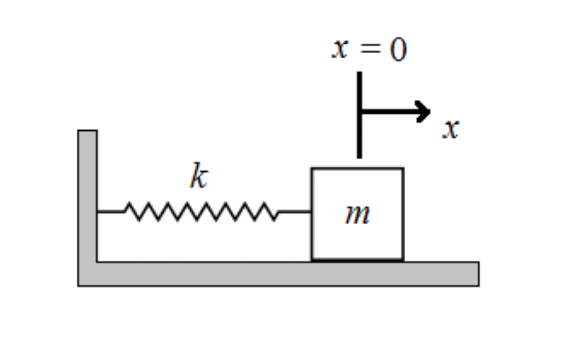This would be the effect on period if a mass-spring system is pulled back 4 times farther
What is "same period"?
Location of greatest potential energy for a simple pendulum
What is the "highest point"?
Stretched and compressed spring locations
True/False: Increasing the mass will increase the period
False
A mass-spring system and a simple pendulum both have a frequency f. If both oscillators were moved to the moon, which has 1/6th the earth's gravity, then each oscillator's frequency would change by a factor of
mass-spring system: no change
simple pendulum: 1/square root of 6
True or False: Total energy increase as a pendulum reaches its highest point
False - total energy is constant. The gravitational potential energy will increase as a pendulum moves upward, but its kinetic energy will decrease.
Location of maximum (magnitude) acceleration
What happens to the kinetic energy and speed as a simple pendulum goes up? Explain your answer (no explanation = no credit).
KE and speed decrease. Reasons:
- increase in GPE
- working against gravity / gravity slowing you down
The mass on a mass-spring system is increased by a factor of 9. Its spring is, however, decreased by 1/3. The new period of the oscillator is ____ times its original period.
What is "square root of 27"?

The frequency of oscillation is
What is "1/3 or 0.3333 Hz"?

When the spring is stretched, the acceleration is (zero) (positive) (negative)
What is "negative"?
Location(s) of fastest speed
If an oscillator vibrates at 10 Hz, then the period of its motion is
What is "1/10 or 0.1 seconds"?


The mass-spring oscillator is compressed at time(s)
What are "0.75 s, 3.75 s"?

When the spring is compressed, the spring force is (zero) (positive) (negative)
What is "positive"?
True/False: a simple pendulum has the least energy at the lowest point of its trajectory
False - the gravitational potential energy is lowest at the lowest point, but the total energy is constant
The mass of a mass-spring system is reduced to 1/4th of its original mass. The spring used is also reduced to one with 1/8th of its original spring constant. The new period and frequency are
period: sqrt(2) times the original
frequency: 1/sqrt(2) times the original


The mass-spring system has zero acceleration at time(s)
What are "0 s, 1.5 s, 3.0 s, 4.5 s"?
Two identical masses are hung from two different springs. The spring with the longer period has the (greater) (smaller) spring constant.
What is "smaller"?
A pendulum on earth has a string length of 0.5 m. The pendulum oscillates with the same period as a mass-spring system that has a spring of k = 2 N/m. What mass does the spring have?
What is "0.1 m"?
First, find the period for the pendulum:
T = 2*pi*sqrt(0.5/10) =1.40 s
The mass-spring system has the same period, which can be used to solve for the mass:
T = 2*pi*sqrt(m/k)
1.40 = 2*pi*sqrt(m/2)